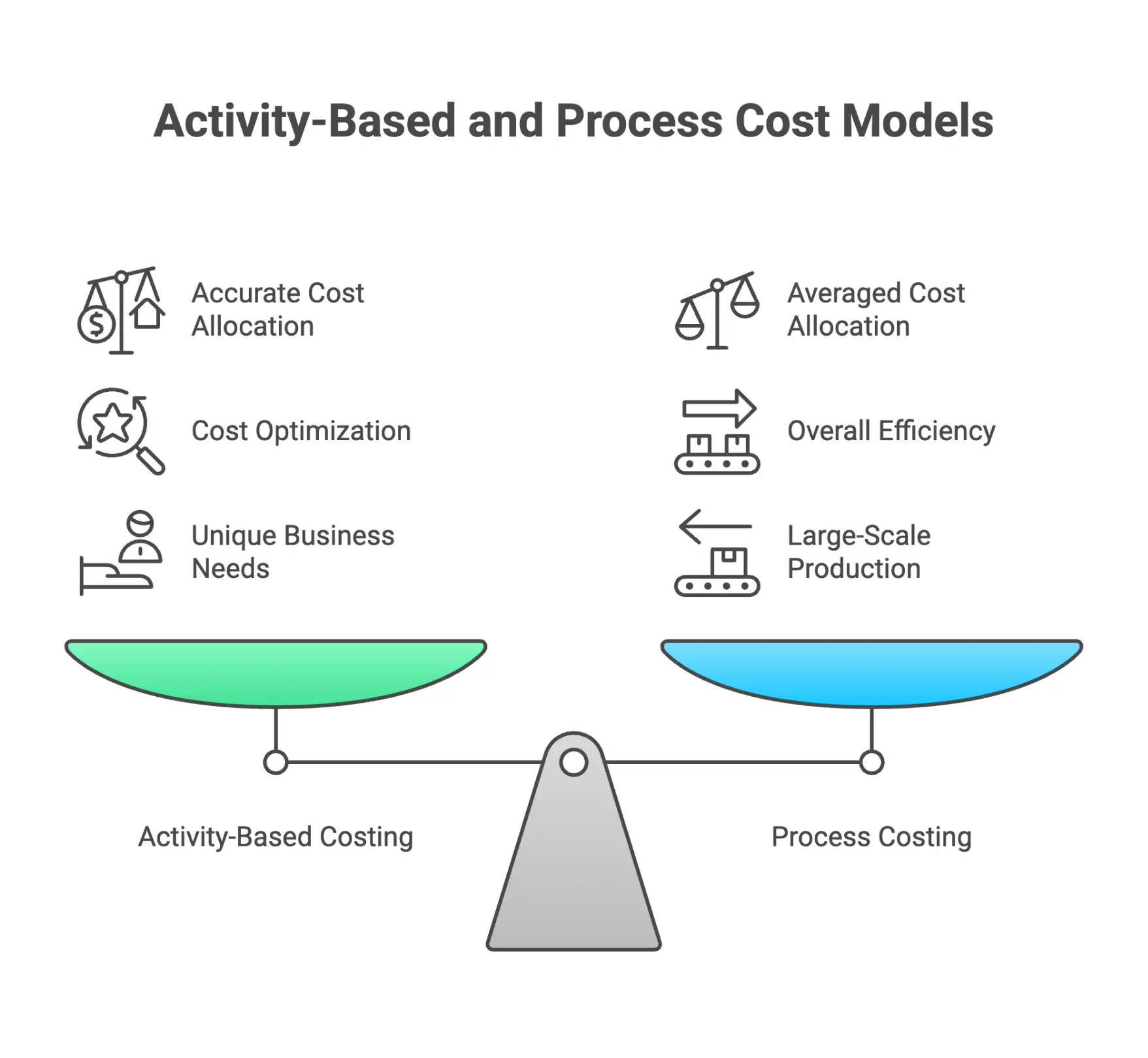

What Is a Cost Model? Your Guide to Smarter Project Costing
TL;DR: A cost model is a structured tool businesses use to aggregate, allocate, and analyze all types of expenses, providing a transparent system for understanding and controlling project or company spending. In this guide, you’ll find cost model definitions, see how cost allocation and identifying cost drivers work, review the three core concepts of cost structures, and discover actionable steps for informed decision making and cost optimization.
Introduction to Cost Models
Have you ever wondered what it really costs to deliver a project or keep your business running? As companies expand, revenue streams diversify, and decision makers face tighter deadlines, financial management becomes trickier. Missing or outdated data, complex processes, and unclear cost drivers can leave even experienced teams guessing and expose organizations to financial risks.
With bids needing greater precision and transparency, and every dollar under scrutiny, the old patchwork of spreadsheets is no longer enough. The reality: disconnected data and fuzzy methods make cost control and cost allocation difficult, muddying the waters for strategic decision making. Without robust cost models and clear cost allocation, cost savings can remain hidden and strategic planning suffers.
The good news? A robust cost model. Especially when supported by cost management software, gathers costs from diverse data sources into one actionable system. By defining cost categories and identifying cost drivers, your team gains actionable insights for both everyday operations and long-term financial planning.
This guide explains cost models in their basic form, explores core concepts, and provides practical information for building, implementing, and optimizing an accurate model that fits your business needs.
What Is a Cost Model?
A cost model is a structured framework for calculating and analyzing all the costs involved in producing goods or providing services. Cost models collect and organize cost information, like material, labor, overhead, and software licenses, into logical cost categories, making total costs visible and actionable.
As MagicOrange describes it, a cost model is much more than financial housekeeping. It is essential for financial management, giving teams detailed, accurate data for smarter decision making and cost optimization.
According to Defense Acquisition University, a cost model combines estimating logic with detailed cost data to generate dependable cost estimates. In practice, this means classifying direct costs, indirect costs, variable costs, and fixed cost elements into a unified system tailored to your business needs.
Key characteristics and core concepts:
- Brings all cost information together for clarity and accountability
- Defines data structures to allocate sources of spend and consumption
- Enables analysis of different scenarios, supporting informed decisions
- Provides a transparent baseline for budgeting and forecasting expenses
- Identifies cost drivers and potential cost savings opportunities
With a robust cost model, businesses can analyze cost allocation, optimize resource allocation, and make strategic decisions based on actionable insights.
Core Purpose and Value: Three Core Concepts
At its heart, the core purposes of a cost model cover these three core concepts:
- Understanding Cost Structures: By breaking down the overall cost into categories like direct costs, indirect costs, variable costs, and fixed cost items, businesses understand where money goes and how costs behave.
- Informing Decision Making: A detailed cost model helps organizations analyze different scenarios, assess financial risks, and choose between trade offs like outsourcing versus expanding in-house capabilities. This leads to strategic decision making built on accurate, existing data.
- Enabling Cost Optimization and Control: Cost modeling and regular analysis help identify inefficiencies, waste, or opportunities for cost savings, boosting the contribution margin and supporting sustainable growth. Scenario analysis and benchmarking against industry standards highlight areas for improvement.

A well-designed cost model ultimately delivers these valuable insights:
- Full transparency into total costs and their underlying cost drivers
- A foundation for financial management practices: pricing strategies, investment, and resource allocation
- The ability to identify areas for cost control, optimize budgets, and save money without sacrificing quality
How Does a Cost Model Work?
Aggregating Data and Structuring Cost Categories
Every effective cost model starts with gathering accurate, detailed cost information from data sources across the business. This includes direct costs like labor costs and materials, plus indirect costs such as utilities, software licenses, and other overhead. With all inputs systematically captured, businesses understand both operational efficiency and potential expenses.
A robust cost model segments this cost information into logical cost categories (materials, labor, overhead, procurement, etc.). Flexible models allow teams to define categories to match their workflow, making analysis and cost allocation consistent across projects and services.
Organizing costs in this way:
- Creates a reliable baseline for budgets and forecasts
- Supports scenario analysis and workload budgeting
- Simplifies identifying valuable insights and necessary adjustments
Configuring Cost Drivers and Allocation
Identifying and analyzing cost drivers, the activities, resources, or processes that generate costs, enables a nuanced approach to managing expenses. Examples include hours worked, machine hours, transportation costs, or number of units produced. Understanding these relationships is crucial for continuous improvement and optimizing resource allocation.
Cost allocation distributes shared or indirect costs based on these drivers, ensuring that every product line or department receives a fair share of expenses. This accuracy strengthens cost control and enables competitive pricing strategies based on real data.
Activity-Based Costing (ABC) and Absorption Costing are two widely used cost allocation methods. ABC provides more accurate information by mapping indirect costs to actual resource usage, while Absorption Costing includes all manufacturing costs, as required by GAAP.
Scenario and Sensitivity Analysis
A modern cost model empowers teams to analyze different scenarios, such as changes in market conditions, sudden increases in labor costs, or fluctuations in production volumes. Sensitivity analysis tests the model with variables like supply prices or operational delays, quantifying the financial impact and highlighting risks.
With scenario analysis, organizations can:
- Understand the overall cost structure across different scenarios
- Align workload budgets with financial planning
- Assess cost competitiveness and profitability goals
- Make informed decisions based on robust cost estimates and accurate forecasting
Types and Behavior of Costs
Clear classification of costs is essential for effective financial management and cost control. Cost models enable businesses to analyze and optimize cost structures, allowing necessary adjustments for sustainable growth.
Main Categories
- Direct Costs: Expenses directly tied to a specific product or service (raw materials, project-specific labor).
- Indirect Costs: Expenses not directly attributable, but supporting broader operations (rent, HR, utilities).
- Fixed Costs: Expenses that remain stable regardless of output level (insurance, long-term leases, certain software licenses).
- Variable Costs: Expenses that change in direct proportion to activity (materials, hourly labor, transportation costs).
- Mixed Costs: Combine both fixed and variable elements (maintenance contracts with base fees plus usage charges).

Understanding cost behavior helps businesses:
- Make accurate pricing and sales decisions
- Target cost optimization efforts
- Classify costs for focused cost management and improved contribution margin
Types of Cost Models and Use Cases
Different projects and industries require different cost modeling approaches, each tailored to strategic planning needs and business needs.
Activity-Based and Process Cost Models
Activity-Based Costing (ABC) assigns costs based on actual activities consuming resources, ensuring more accurate cost allocation and enabling cost optimization by highlighting inefficiencies and non-value-adding processes.
Process Costing averages costs over large-scale, continuous production. This is useful for manufacturing or processing industries focusing on overall efficiency rather than granular detail.
Both models allow organizations to:
- Demonstrate operational efficiency gains
- Tune cost structures for unique business needs
- Identify areas for cost savings and improve actionable insights

Asset Valuation and Accounting Cost Models
For stable, transparent financial outcomes, original-cost models record assets at historical purchase price minus depreciation, aiding financial management, benchmarking, and audit readiness.
Cost models built for accounting:
- Keep financial records consistent
- Simplify compliance with accounting standards
- Provide reliable inputs for budgeting, forecasting, and strategic planning
Product Line and Service Cost Models
To assess profitability per product line or service, specialized cost models break out the direct and indirect costs behind each offering. This guides pricing, feature investments, and resource allocation.
Proper product and service costing models enable businesses to:
- Assign and analyze costs across different revenue streams
- Monitor contribution margin of each offering
- Support informed decisions on expansion or sunsetting of products/services
Key Components of an Effective Cost Model
1. Direct and Indirect Costs
Every robust cost model separates direct costs, such as subcontractor bills or specific project labor, from indirect costs like admin support or centralized systems. Missing indirect costs leads to underestimated budgets and poor strategic decision making.
2. Fixed Costs and Variable Costs
Distinguishing fixed cost elements (rent, software contracts) from variable costs (per unit materials, seasonal labor costs) allows for accurate forecasting and price setting. Understanding how each behaves under different scenarios is a core concept for informed resource allocation.
3. Scenario Analysis Tools
Informed decision making requires testing different scenarios and stress-testing assumptions. Incorporating flexible templates and scenario tools empowers fast analysis, adjustment, and continuous improvement.

Forecasting, Data, and Financial Planning
A reliable cost model integrates historical data, anticipated market trends, and existing data sources to create accurate forecasts. Regular data validation and updating keep the model aligned with changing business conditions. Using standard costing and benchmarking helps compare actual spend against industry standards and best practices.
Key practices:
- Regularly update and validate data sources and inputs
- Use historical data to refine future forecasts and budgets
- Verify model outputs against real outcomes for improved credibility and usefulness
Cost Model Benefits: Cost Optimization and Decision Making
Actionable Insights and Transparency
Well-constructed cost models provide all stakeholders, from finance to operations, with transparent, actionable insights into resource allocation and total costs, encouraging joint ownership of both challenges and outcomes. This creates the foundation for strategic, informed decision making.
Driving Sustainable Growth
With accurate cost estimates and real-world scenario analysis, organizations can identify areas for cost savings and optimize for contribution margin, supporting sustainable growth without sacrificing quality or performance.
Limitations and Challenges of Cost Models
Cost models, while essential, are not infallible. Being aware of challenges enables smarter, proactive cost management.
Unpredictable External Factors
Sudden market conditions, regulatory shifts, or supply chain disruptions can undermine even the best cost model. Treat every model as a decision-making aid, not a crystal ball.
Data Quality and Model Assumptions
Decisions are only as reliable as the data behind them. Incomplete or outdated data and poor assumptions about cost drivers or cost structure can skew results and risk financial losses.
Best Practices:
- Validate models routinely against historical performance
- Stress-test model logic using scenario analysis with clean, current data
- Gather continuous feedback for incremental improvements and necessary adjustments
Best Practices for Building, Implementing, and Improving Cost Models
Start with Purpose and Core Concepts
Define the purpose and objectives of your cost model. What financial management questions must it answer, and which strategic decisions will it support? Knowing this frames how you segment costs and choose your methods.
Gather and Analyze Data
Pull together accurate, detailed data from both internal and external sources, including previous projects, current operations, and industry research papers. The more comprehensive the data, the more dependable the model.
Segment and Structure Costs for Clarity
Group costs logically into categories. Direct, indirect, fixed, and variable costs should be clearly separated to support targeted analysis, resource optimization, and scenario comparisons.
Identify and Analyze Cost Drivers
Map out the cost drivers that influence each category the most. This sharpens your view of where costs come from and highlights which levers affect financial outcomes.
Build in Validation and Feedback
Test the cost model against real-world results. Invite regular feedback, and adjust the model with new data as your business evolves. Continuous monitoring and knowledge transfer help teams understand and use the model for lasting value.

Frequently Asked Questions
What is a cost model, and why is it important for business?
A cost model is a structured tool that aggregates, breaks down, and analyzes the costs involved in delivering goods or services. It is critical for understanding cost structures, supporting strategic decision making, and enabling organizations to control and optimize spend.
How do cost models support informed decision making and financial planning?
Cost models reveal true direct costs, fixed cost structures, and cost drivers, enabling managers to test scenarios and set realistic budgets. This replaces guesswork with evidence-based, actionable insights.
What are the core components and three core concepts of effective cost models?
An effective cost model separates direct, indirect, fixed, and variable costs; structures data for analysis; and includes robust tools for scenario analysis. Understanding and updating cost drivers is essential.
What are the limitations and risks of using cost models?
Cost models may be compromised by unpredictable market conditions or low-quality data. Regular validation, up-to-date information, and scenario testing minimize risks of inaccurate outputs.
How can teams keep their cost model accurate and relevant?
Update input data regularly, validate model predictions against actual outcomes, and pursue feedback to address evolving business conditions. Continuous improvement and scenario-based planning ensure the cost model remains a valuable tool for financial management.
Conclusion: The Strategic Value of Cost Models
In a world of shifting market conditions and rising expectations, cost models have become foundational for financial planning, cost optimization, and informed decision making. When cost modeling becomes standard practice, organizations gain:
- Clear, actionable insights into total costs, cost structure, and cost drivers
- Strategic resource allocation faster and with more confidence
- Support for pricing strategies, investment, and cost control
- A baseline for comparing revenue streams, workload budgets, and financial risks
- Tangible cost savings and improved contribution margin, driving sustainable growth
Cost models empower businesses to identify areas where they can save money, forecast accurately, and benchmark against industry standards. They foster transparency, operational efficiency, and enable decision makers to adjust with agility.
Ready to Take the Next Step?
Curious how modern cost modeling software can simplify building a robust cost model for your business needs? Explore Nomitech’s full suite for tools, scenario analysis, and training, or contact our team for guidance on cost allocation, core concepts, and sustainable cost optimization tailored to your goals.




